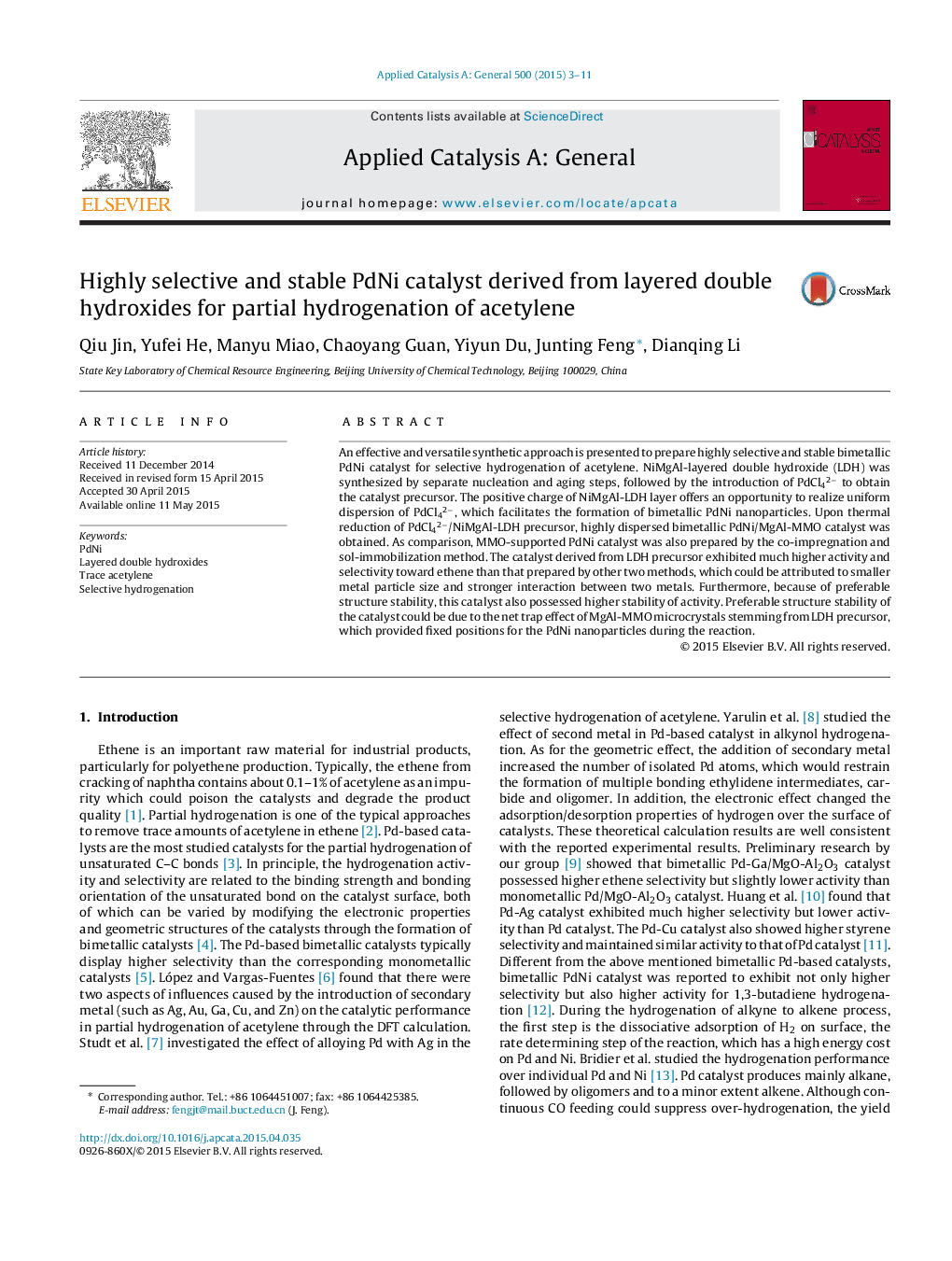| Article ID | Journal | Published Year | Pages | File Type |
|---|---|---|---|---|
| 39140 | Applied Catalysis A: General | 2015 | 9 Pages |
•NiMgAl-LDH was synthesized by a separate nucleation and aging steps method.•The obtained NiMgAl-LDH was then used as precursor for PdNi catalyst.•Bimetallic PdNi nanoparticles were highly and stably dispersed.•Ethene selectivity was improved owing to strong interaction between two metals.•Due to net trap confinement effect, PdNi catalyst exhibited preferable stability.
An effective and versatile synthetic approach is presented to prepare highly selective and stable bimetallic PdNi catalyst for selective hydrogenation of acetylene. NiMgAl-layered double hydroxide (LDH) was synthesized by separate nucleation and aging steps, followed by the introduction of PdCl42− to obtain the catalyst precursor. The positive charge of NiMgAl-LDH layer offers an opportunity to realize uniform dispersion of PdCl42−, which facilitates the formation of bimetallic PdNi nanoparticles. Upon thermal reduction of PdCl42−/NiMgAl-LDH precursor, highly dispersed bimetallic PdNi/MgAl-MMO catalyst was obtained. As comparison, MMO-supported PdNi catalyst was also prepared by the co-impregnation and sol-immobilization method. The catalyst derived from LDH precursor exhibited much higher activity and selectivity toward ethene than that prepared by other two methods, which could be attributed to smaller metal particle size and stronger interaction between two metals. Furthermore, because of preferable structure stability, this catalyst also possessed higher stability of activity. Preferable structure stability of the catalyst could be due to the net trap effect of MgAl-MMO microcrystals stemming from LDH precursor, which provided fixed positions for the PdNi nanoparticles during the reaction.
Graphical abstractFigure optionsDownload full-size imageDownload high-quality image (209 K)Download as PowerPoint slide
